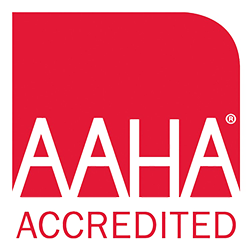Library
-
Endocarditis is an infection of a heart valve, most often affecting the mitral or aortic valve. It can arise any time that bacteria enter the bloodstream, though it is more common when the heart valve has already been damaged for some other reason. This handout discusses the causes, clinical signs, diagnosis, treatment, and prognosis of this condition.
-
Epileptic seizures in pets are a diagnosis of exclusion and may be found in any dog but there may be some breed predispositions that are more common. The cause is often unknown. A variety of medications are available to help control the seizure activity if an underlying cause is not found.
-
Esophageal tumors are extremely rare but more often than not malignant type tumors. The cause is unknown but cases in tropical environments may be due to infection by the worm Spirocerca lupi. Treatment options are limited as surgical complications are high due to the advanced nature of the disease at time of diagnosis.
-
Female dogs will have their first estrous (reproductive or heat) cycle when they reach puberty. Each cycle consists of several stages; the stage called estrus refers to when the female can become pregnant. This handout explains the cycle stages and signs as well as how to prevent mating and pregnancy in your female dog.
-
Estrus (heat) begins when a female dog reaches sexual maturity and occurs about twice per year, although it varies from dog to dog. From the beginning of a female’s estrus period, she will be attractive to male dogs, though she will usually not be receptive or allow mating until seven to ten days into her cycle. The time of mating is extremely critical and it is highly recommended to have your female tested to determine the optimal days for breeding.
-
Epiphora or excessive tearing from the eyes can be a sign of tear duct blockage or more serious eye problems. Clinical signs include dampness beneath the eyes, reddish-brown staining of the fur beneath the eyes, odor, skin irritation, and skin infection. The facial anatomy of brachycephalic breeds may play a role in this condition. Treatment may include flushing of the nasolacrimal duct, or surgery to open the lacrimal puncta. The prognosis is variable and dependent on whether the underlying cause can be found and treated.
-
Dogs can be amazing family members and greatly enrich our lives! Adding a dog to the family is also a serious commitment, and research before choosing a dog will help set the family and the dog up for success. This handout goes over some factors to consider when selecting a dog.
-
Fading puppy syndrome describes puppies that decline in health and die within about two weeks of birth. Neonatal puppies are fragile and so there can be many causes of this syndrome including birth defects, inadequate care from the mother, poor health status of the mother and/or infectious diseases. As well as addressing a specific cause, treatment focuses on maintaining hydration and warmth while providing adequate nutrition. Environmental hygiene is extremely important.
-
Fanconi syndrome affects the ability of the kidney tubules to re-absorb certain electrolytes and nutrients such as potassium and glucose, allowing them to spill into the urine. This causes excessive drinking and urination and ultimately kidney disease. Basenjis are most commonly affected. It is often diagnosed based on glucosuria without hypoglycemia. Though reversal of this disease is not possible, treatment involves supplementation with different minerals and electrolytes as well as standard treatments for management of kidney disease. Regularly monitoring of blood parameters is recommended to allow early intervention if the disease is worsening. Fanconi-like syndrome has occurred in dogs ingesting certain chicken jerky treats and can be resolved by discontinuing these treats.
-
A fecal Baermann is a special fecal test used to diagnose infection by parasites that pass larvae in stool instead of eggs. A small golf-ball sized sample of fresh stool is mixed with warm water to encourage larvae to separate from the fecal material to allow identification. The most common parasite diagnosed with a fecal Baermann is lungworm, which typically causes signs of coughing.


